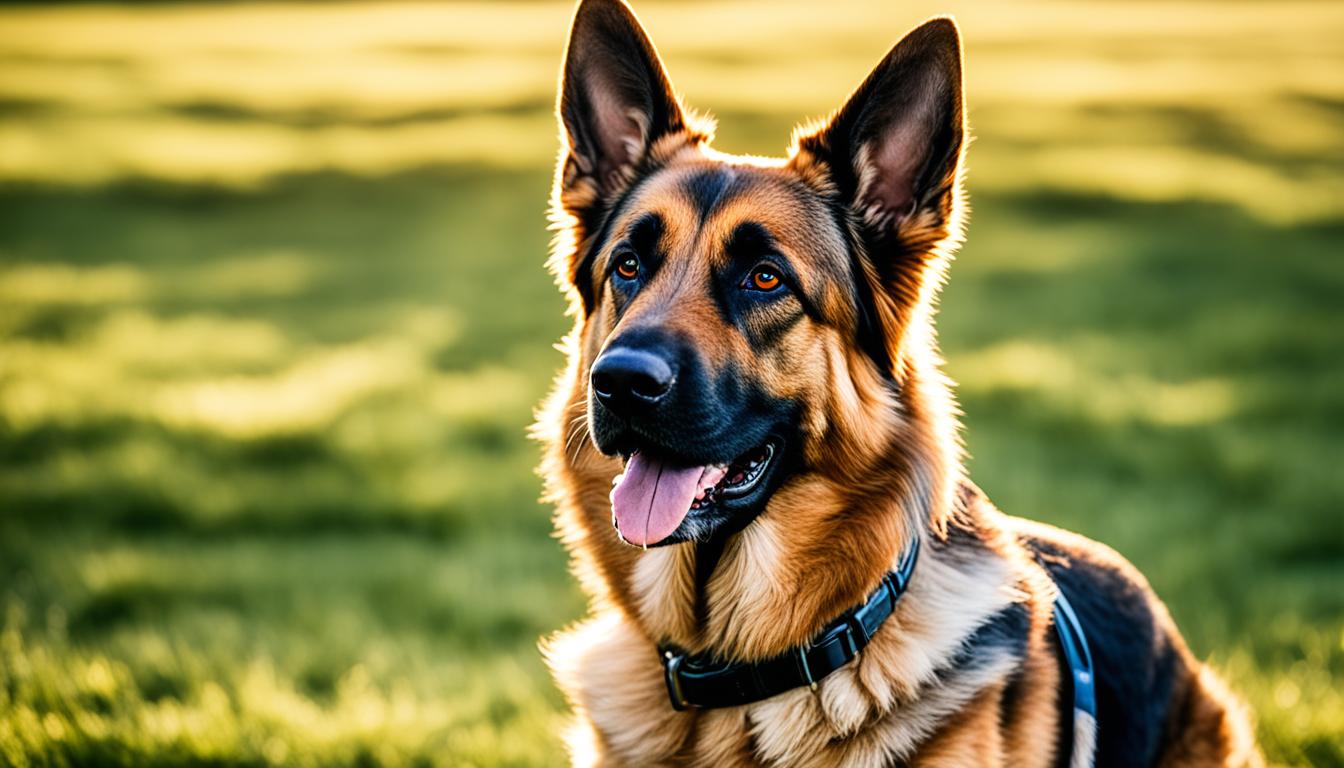Brown German Shepherd genetics – Genetic information about brown coloring.
Ever wondered how the striking brown German Shepherd gets its special shade? The answer is in the world of dog genetics. We will explore the secrets behind this dog’s brown coat. Understanding these genetic traits can help us appreciate our pets more.
The world of brown German Shepherds is fascinating. Genetics define the exact color and shades of their coat. We’ll look at how melanin and genes work together. Through exploring German Shepherd genetics and brown coat genetics, we find the science in their beauty.
Key Takeaways
- The brown (TYRP1) gene is responsible for brown versus black coat colors in dogs.
- A dog must be homozygous for brown (b/b) and able to produce eumelanin to express a liver/brown/chocolate phenotype.
- The interaction of the brown gene with other coat color genes, such as the E locus, can further influence the final coat color.
- Genetic testing can help predict the coat color of German Shepherd puppies based on dominant and recessive genes.
- Understanding the dog coat color genetics is essential for responsible breeding and predicting coat color outcomes.
Understanding the Genetics of Brown Coloring in Dogs
To get why dogs have brown fur, we dive into the basics of coat color. Only two pigments, eumelanin and phaeomelanin, create the colors in your furry friend. Eumelanin makes black while phaeomelanin brings out reds.
The Basics: Eumelanin and Phaeomelanin
Special cells in hair follicles, called melanocytes, add melanin to hair. This makes the main color of a dog’s coat. For brown coats, black eumelanin can change with different genes. Phaeomelanin makes oranges, reds, and other warm colors.
Genes Influencing Coat Color
Many genes mix eumelanin and phaeomelanin to give dogs their varied colors. Important genes are called A, E, K, B, D, M, H, and S. Knowing about these genes helps us understand the wide range of dog coat colors.
Brown German Shepherd Genetics – Genetic Information About Brown Coloring
The Brown (TYRP1) Gene
The TYRP1 gene controls if a dog’s coat is brown or black. It has five variants affecting brown pigmentation. The VGL tests for three common variants in different dog breeds.
Genotypes and Phenotypes
A dog becomes brown if it has a b/b and can produce eumelanin. This includes having at least one E allele at the MC1R. However, dogs with only phaeomelanin get brown noses and foot pads. Their coat stays red or yellow.
Interaction with Other Genes
What color a dog gets is not just from the TYRP1 gene but also the MC1R. Research looks at how these genes work together. Some colors, like “cocoa” in French Bulldogs, need special tests to find.







